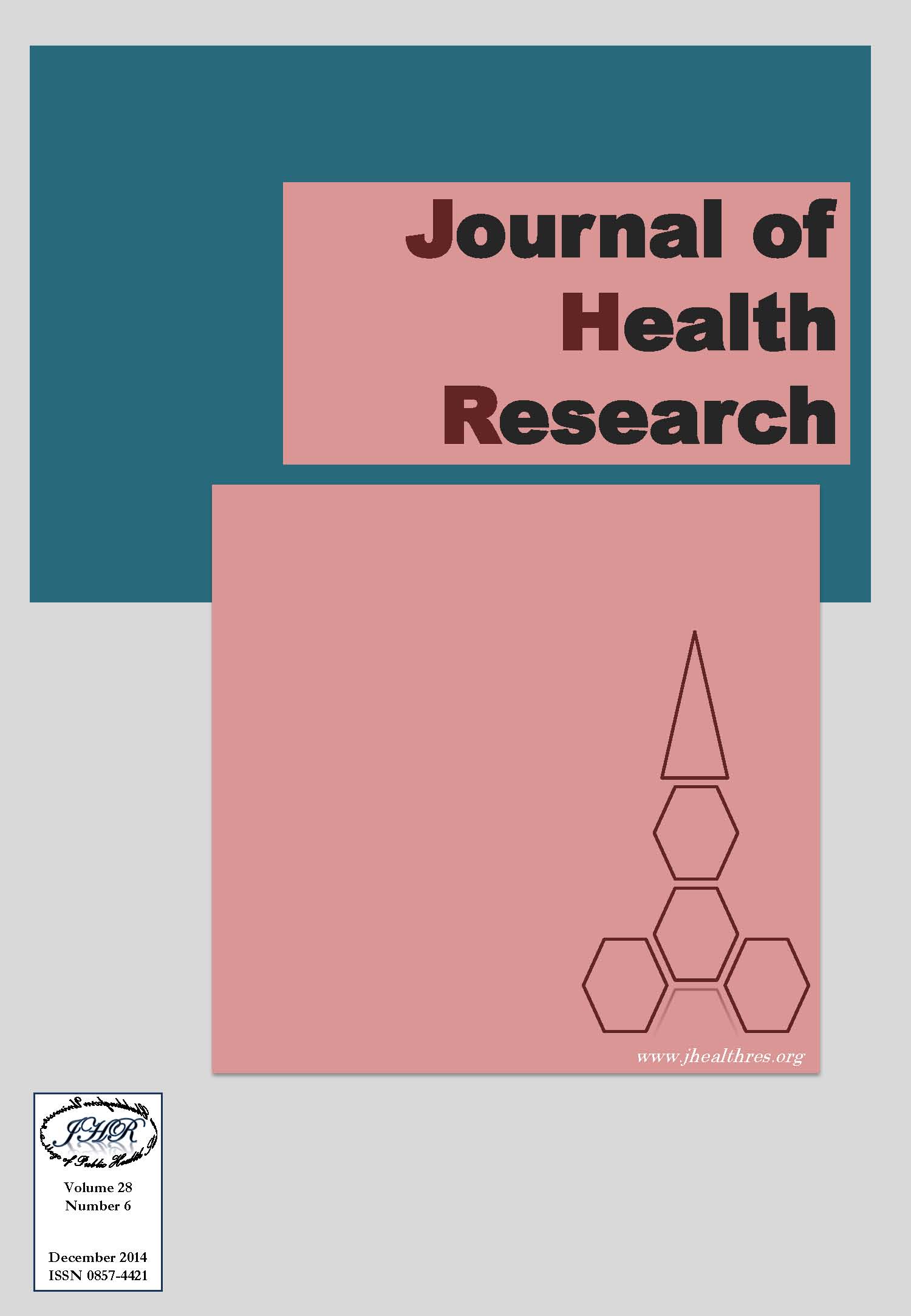Non-Marital Cohabitation and Health Implications among Undergraduate Students in Two Provinces near Bangkok, Thailand
Keywords:
Non-marital cohabitation, Physical health, Mental health, Health behaviour, Unsafe sex, ThailandAbstract
Non-marital cohabitation has emerged as a new form of living together in recent world. Studies have shown that large number of Thai adolescents and youth population engage in non-marital cohabitation which implicates numerous social and health problems. But, limited information is available on health effects of non-marital cohabitation among adolescents and youth in Thailand. This paper examines non-marital cohabitation behaviour among undergraduate students and its implications for their health. A cross-sectional behavioural survey was undertaken involving 438 students pursuing undergraduate degrees in two provinces near Bangkok, Thailand. About 27.6 percent students were found to have cohabitation. Cohabitants were reported to have a better self-reported mental health than non-cohabitants (t = -3.4, P = 0.001) while self-reported physical health was nearly the same in both groups. Health-risk behaviours such as alcohol consumption (OR = 2.716, 95% CI = 1.19-6.22) and unhealthy diet (OR = 0.585, 95% CI = 0.37-0.93) was significantly higher among cohabitants. However, less number of cohabitants were observed to practice unsafe sex (OR = 0.215, 95% CI = 0.07-0.65) than the non-cohabitants. Efforts need to be undertaken to educate undergraduate students about health implications of non-marital cohabitation and other associated risky behaviours.







